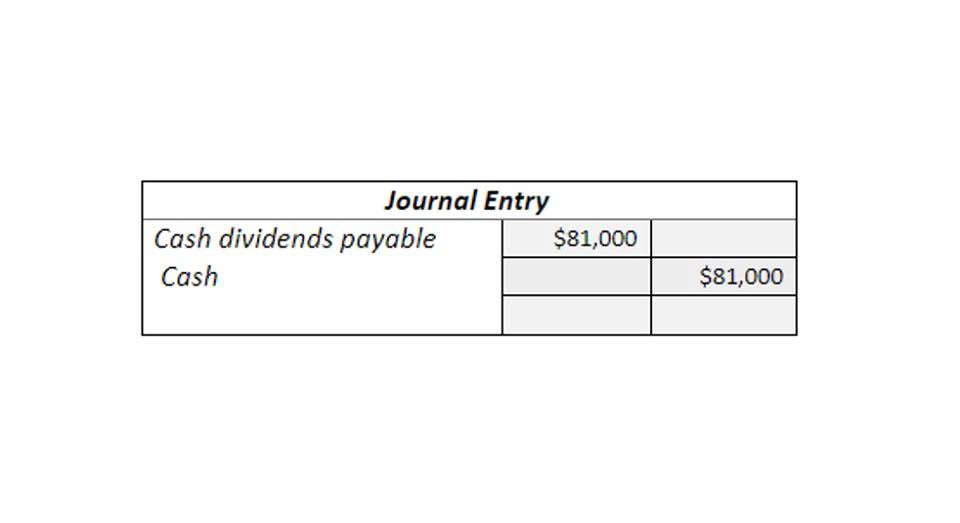
The company transfers the balance from retained earnings to the additional paid-in capital account. Shareholders do not receive any additional cash if there is a large stock dividend. However, shareholders have the option of converting shares into cash with an immediate sale. Stock dividends do not affect the shareholders’ ownership rights in the company. These shares are issued in proportion to the existing shares held by the shareholders.

Chegg Products & Services
Certain trusts are passively managed and seek to track their target index during the trust’s life. For a more complete discussion of the risks of investing in this trust, click on the Fact Card. MS Technology IndexThe Morgan Stanley Technology IndexSM is the exclusive property of Morgan Stanley.
Financial Services & Investing Overview
- A stock split is used primarily by companies that have seen their share prices increase substantially.
- When the company issues stock dividends in excess of 25% of the total value of the existing shares, it is treated as a stock split.
- In practice, the small stock dividend is accounted for like a cash dividend.
- DJ Consumer Goods Index The Dow Jones U.S. Consumer Goods Index is service mark of Dow Jones & Company, Inc. and have been licensed for use for certain purposes by Invesco Distributors, Inc. and the trust.
Lower-priced shares after a split seem to be psychologically more appealing to some https://www.facebook.com/BooksTimeInc/ investors, even though the company’s fundamental value hasn’t changed. This relates to the concept of “nominal price illusion”—like the “money illusion”—that investors have a cognitive bias to see lower-priced shares as more of a value, no matter that there’s no change in the stock’s fundamentals. When a stock splits, the option’s strike price and number of contracts are usually adjusted to maintain the same total value.
- Undistributed income and capital will be distributed on the next Distribution Date in which the total cash held for distribution meets or exceeds any applicable minimum that may be specified in the prospectus.
- The main reason for issuing large stock dividends and stock splits is to lower the trading price of the stock per share.
- The forward stock split then increases the number of shares owned by the remaining shareholders.
- A small stock dividend (generally less than 20-25% of the existing shares outstanding) is accounted for at market price on the date of declaration.
- In some cases, the shares issued as dividends in kind can be sold partly or in full by the shareholder on the same day of payment.
- LIQUIDATION PRICE Represents the value per unit that a unitholder would receive if the unitholder redeemed or sold units.
- The second, a large share issue results in market share price reduction after the stock dividend.
View All Financial Services & Investing

A reverse stock split is when a company reduces its outstanding shares by combining multiple shares into one, resulting in a proportionally higher price per share. This is the opposite of a forward stock split, where a company increases its share count while decreasing the price per share. However, research has consistently shown that stock splits often result in short-term abnormal returns, with companies experiencing an average 2% to 4% increase in value around the split announcement.
Does the Stock Split Make the Company More or Less Valuable?
- It includes stocks among the largest 750 that demonstrate growth style characteristics.
- The stock dividend rewards shareholders without reducing the company’s cash balance.
- Invesco Capital Management LLC is the investment adviser for Invesco’s ETFs.
- For example, if a firm’s stock is currently selling for $240 and the firm splits its stock 4 for 1, the price per share will fall to around $60.
- In contrast to cash dividends discussed earlier in this chapter, stock dividends involve the issuance of additional shares of stock to existing shareholders on a proportional basis.
- The lower share prices resulting from a split may make the stock more accessible to smaller investors, potentially broadening the shareholder base.
For example, if a company has had a two-for-one split followed by a three-for-one split, the original number of shares would be multiplied by six (2 × 3). The share price adjusts inversely to maintain the same market capitalization, that is, it would be one-sixth what it was, all else being equal. When a company’s large stock dividends and stock splits are issued primarily to: share price increases to a nominal level that may make some investors uncomfortable or is beyond the share prices of similar companies in the same sector, the company’s board may decide on a stock split. A stock split can make the shares seem more affordable, even though the underlying value of the company has not changed. Recording small stock dividends A stock dividend of less than 20 to 25% of the outstanding shares is a small stock dividend and has little effect on the market value (quoted market price) of the shares. Thus, the firm accounts for the dividend at the current market value of the outstanding shares.

If the market price of the stock rises to https://www.bookstime.com/articles/what-are-current-assets $80 per share, the board of directors can move the market price of the stock back into the range of $40 to $50 per share through a 2-for-1 stock split. For example, suppose that XYZ Corp has set aside $2.5 million and plans to pay a quarterly $2.50 dividend on December 8 to all of its shareholders on record as of December 1, when there are initially one million shares outstanding. But the board of directors authorized a stock split on November 31, meaning the holders of the one million shares outstanding will now be the holders of two million shares outstanding.

